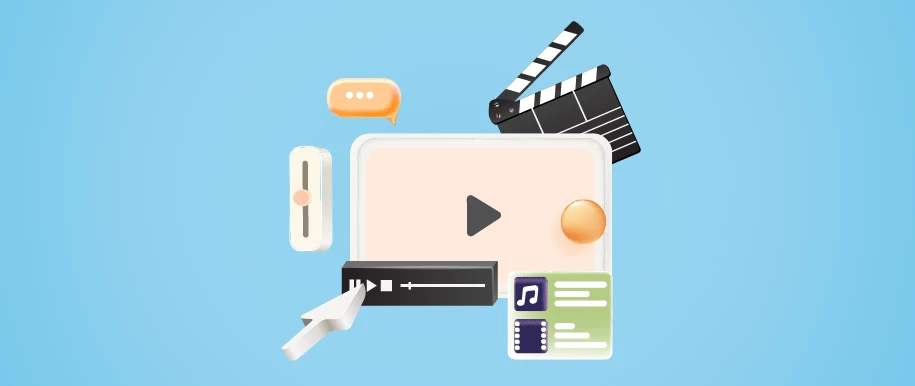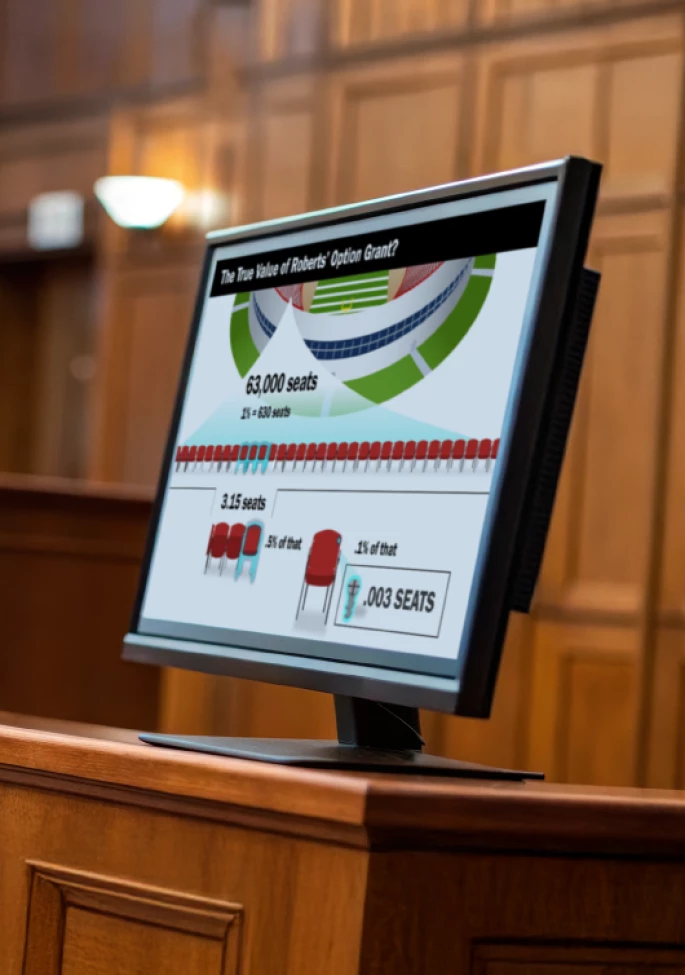A great trial lawyer who knows how to use words to paint vivid pictures in the minds of jurors can probably try their case without any visuals. But with growing use of CGI, on-demand media, and shrinking attention spans, multi-generational jurors have become accustomed to content delivered in bright bursts of light, color, sound, and motion.
Think of the millions of viewers of high-tech crime dramas—as jurors they expect sophisticated lawyers representing sophisticated clients to bring a little of that same graphics magic to the courtroom. In other words, in most cases it will be important to incorporate some form of multimedia into your presentation.
But here’s the inevitable kicker: it’s equally important not to fall into the trap of overusing your media. You’ll risk losing the direct, personal, powerful connection forged between a trial lawyer and the jury. You can’t build rapport if there’s always a computer in the way.
For every fireworks display of computer graphics that grabbed your attention on CSI, there was an equally compelling moment on Law & Order where a passionate Jack McCoy used only his words to persuade the jury. Somehow, Jack McCoy clicking through PowerPoint slides just wouldn’t have had the same impact.
How to Maximize Your Media Impact
- Make sure each graphic is at its best by sticking to our basic rules.
- We can’t stress this enough: your graphics’ titles are an invaluable (and easy!) place to reinforce your point/case theme. Title your graphic powerfully to ensure your jury connects that image with exactly what you want them to remember. Can titles be objected to? Sure, but with PowerPoint you can edit the slide in seconds at counsel table.
- Above all, vary the use of your media. Like too much foie gras, even the finest graphics will lose their luster if they are all you offer the jury.
How to Mix Up Your Media
- Establish a Narrative
In your opening, consider a simple narrative PowerPoint that can anchor your key points without disrupting that all-important personal connection with the jury. If possible, and allowable by the court, use a PowerPoint remote so you can walk around the courtroom freely.
- Utilize Trial Software
During direct and cross examination, use trial presentation applications like TrialDirector or OnCue. Unlike PowerPoint, these applications give you tremendous flexibility to jump from any exhibit or video clip in seconds.
- Enlarge Your Evidence
Don’t forget the ease and impact of one or two good old-fashioned poster enlargements (“blow-ups”) mounted on foam core. Just because it’s old school doesn’t mean it’s obsolete. For example, think about using blow-ups that can serve as a quick reminder of key terms, definitions, or the layout of an important location.
- Write It Down
Speaking of old school, nothing reinforces the points you score on cross more effectively than writing them in real time on a big flip chart. Then, bring the flip chart back for your closing to drive home those points.
- Tailor to Testimony
Use one or two anchor graphics in support of your expert’s testimony. This can be a good time to flaunt those fancy graphics—a high-powered computer animation may be just right for that MIT-trained engineer. On the other hand, Joe Pesci made great use of a simple stack of Polaroids when he put Marisa Tomei on the stand in My Cousin Vinny. In other words, the graphics need to complement the subject matter and the witness.
- Close with Commentary
In your closing, consider another PowerPoint that will add commentary to testimony, video clips, or expert graphics. You may also find it helpful to use a simple blow-up of your timeline to bring the jury back to the fundamentals of your case after your opponent has attempted to confuse them.
Conclusion
Electronic visual aids can be a much-anticipated and highly effective medium for presenting a case to the jury, but great trial lawyers—like great storytellers—know how and when to use them. They know when to ride the cutting edge and when to keep it “old school.” And, of course, they know when to set everything else aside and just talk.
Each communication medium has its part to play, and the appropriate balance should be dictated by the case itself. But no matter the relative balance you decide upon, remember that it’s called multi-media for a reason. Variety keeps your jurors interested.
View this article on The National Law Review here: Using Multi-Media and Technology In the Courtroom (natlawreview.com)







